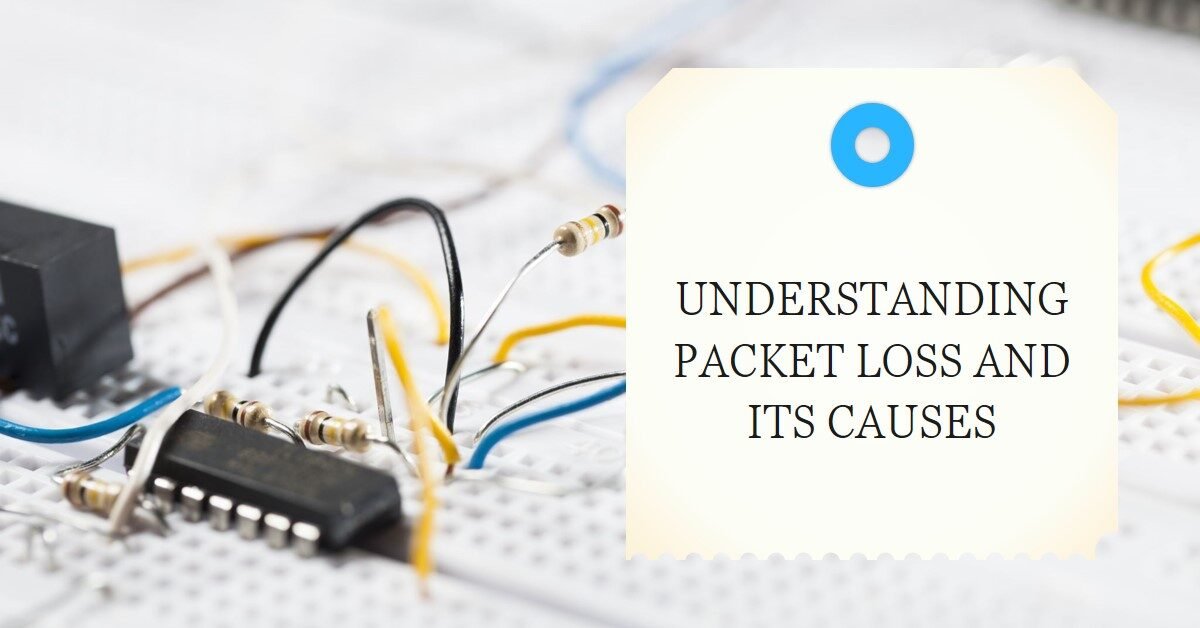Packets are small units of data that are sent and received between a router and a device connected to the network. When a packet or more fails to travel between the router and the connected device, a packet loss occurs. Packet loss manifests itself in the form of slow service, network disruption, and sometimes even total loss of network connectivity.
Packet loss can grave consequences, as it can cause a disruption in the performance of the network and cause operational problems for business. For other users, packet loss manifests itself mostly in applications and activities that require real-time packet processing such as video streaming, audio streaming, and online gaming.
Causes of Packet Loss
Network Congestion
The most common cause of network congestion is packet loss. Network congestion, as the name implies, is the congestion of the internet network. You can think of this congestion as the congestion that you would find on a highway, the number of cars on the highway increases during peak time, which causes slowdowns. The same is the case with the network traffic.
When network traffic reaches its maximum capacity, it will become difficult for some packets to travel properly and it can lead to loss of packets. A network has the capacity to handle only so much traffic and when the traffic exceeds the capacity, it leads to loss of packets. To avoid packet loss, one can configure the wireless network through the settings of the router (e.g. Oppowifi.com for Oppo routers) to accommodate more devices.
Hardware Problems
Another common cause of packet loss is hardware problems. Hardware problems are quite common and these lead to packet loss. Common hardware problems including outdated routers, firewalls, chipsets, and switches can affect the performance of the network and cause packet loss. Similarly, older models of smartphones, tablets, and laptops being used by users can also cause packet loss. Sometimes, the reason can be that older devices with outdated chipsets could hog power and cause bottlenecks in the network.
Software Bugs
Software bugs are another common cause of packet loss. In wireless networks, software bugs are because of the firmware used by the router. These bugs usually appear in older versions of the software or firmware used by the router and can cause issues with data transfer. Sometimes the software bugs can be fixed with a simple reboot but most of the time, they require a software update. An easy fix to this is to simply update the router’s software or firmware through http://192.168.8.1, which can fix this problem and prevent packet loss.
Software Threats
Software threats have also become common in recent years and these can lead to packet loss. Cyber criminals are coming up with sophisticated cyber attacks and they have figured out a way to launch packet drop attacks. A packet drop attack involves a cybercriminal taking control of the wireless router and sending instructions to the router to drop packet data into a stream. Huge businesses and organizations are usually victims of such packet loss attacks and a possible sign that a packet loss attack is underway is when there is an unusually high rate of packet loss across a network in a very short amount of time.
Wireless Vs Wired Network
Data traveling over a wireless network suffers from greater and more frequent packet loss than a wired connection. Since wireless networks have become the mainstay of connection nowadays, packet loss has become quite common on wireless connections. Wired networks on the other hand don’t become overwhelmed so easily and hence there is minimal packet loss through wired networks.
